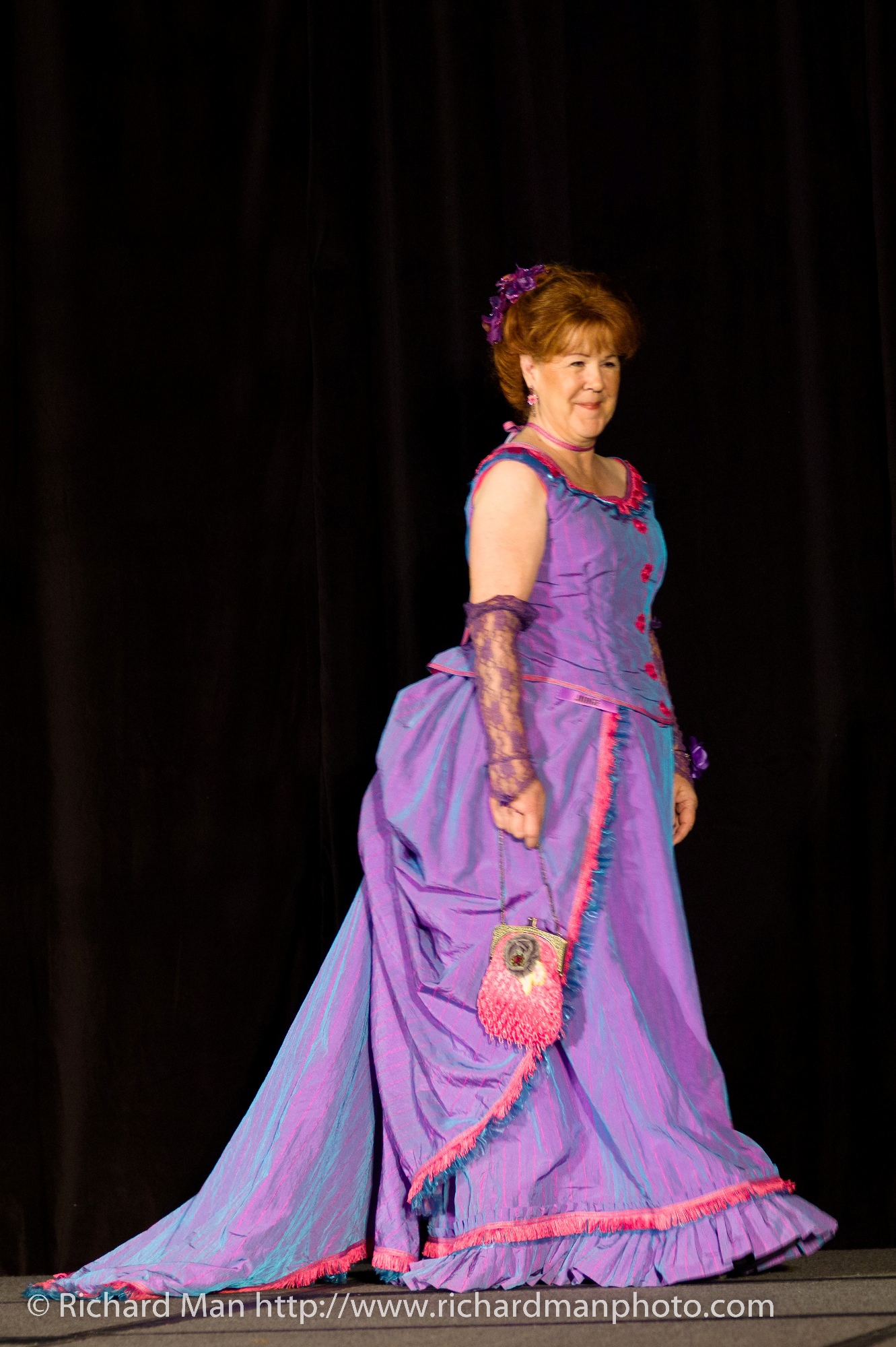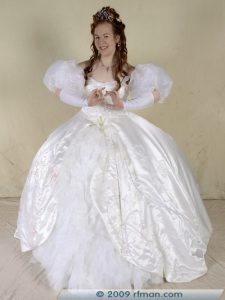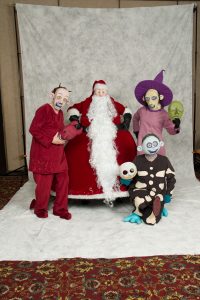Schedule for Friday, Saturday, Sunday and Monday
[Actual list is missing. This information is from the last version of the CC30 website and LiveJournal Costume-Con Community. –CC Archvist]
Predicted Panels:
Apprentice Geisha Dressing
Altering a Pattern to Fit Your Cup Size
Fitting a Victorian Bodice
Presenting with Hoops and Bustles and Other Unwieldy Items
Introduction to Dye Techniques
Costuming Online
Kanzashi
Fosshape and Wonderflex Demo
Intro to Fursuiting
Electrifying Costumes
I Don’t Costume, Why am I Here?
Creating and Keeping in Character
Surviving your First Masquerade
Horror Stories
Making Plushies and Stuffed Friends
Modifying Commercial Patterns
Decorative Embellishments
Getting and Finalizing Ideas
Secrets of Crossdressing Men and Women
The Costumer’s Library
Making Your Hobby Your Job
Modifying Thrift Store Finds
Vacuforming
Intro to Fabrics
Making Costumes Liveable
What Are All Those Feet For?
Introduction to Costume-Con
Future Costume-Cons
Predicted “Tracks”/Panel Topic Groups:
Science Fiction Costuming
Historical Costuming
Quilting
Beginner Costuming
Steampunk
Arizona and Western
Wearable Art
Props & Accessories
Presentation
New to Costume-Con
Family and Friends
Ethnic
Patterns/Fitting
Fabric Manipulation
Technology
Costumers
Materials
Disclaimer – Please note that panels are not set yet, and may change between now and the Convention.
Costume-Con 30 is a 4-day weekend conference for everyone who designs, makes, wears and/or admires costumes. CC-30 will include a myriad of instructional workshops, panel discussions, displays, a dealers’ room, costume competitions, get-togethers, parties, and the broadest collection of creativity all focused on costuming that you have ever had the privilege to contact in one place. Nothing starts the creative juices flowing in new paths like the intensive exposure to fresh viewpoints, techniques and enthusiastic dialog. Here, there be passion…
Want to get an overview of what makes up Costume-Con 30? Start here!
STAGE EVENTS
Masquerades – Costume competition; costumes are presented on stage with a bit of theatrical support to show the work off to its best advantage. Technically, we’ll have two, the SF/F, and the Historical. Costumers compete at several different levels: Young Fan (under 13), Novice, Journeyman and Master.
* Science Fiction and Fantasy costumes are evaluated by judges seated in the audience (Presentation) and by close examination by a separate panel (Workmanship) which is optional on the part of the contestant.
* Historical costumes are judged on documentation (research on the garment(s)/style(s)/historical period), construction (how well it is made), and presentation (how well the audience is entertained). There are three categories:
- Recreation – where you look like you just stepped out of the historical period. Not necessarily a recreation of a specific outfit in a picture, but as if it could be.
- Interpretation – where the ‘lines are period’ but no one would think you were from a historical period.
- Ethnic – For essential changeless styles like an Indian Sari.
Future Fashion: A two-part competition
- The design competition takes place prior to the conference, with designers submitting their designs by mail. Winning designs are e-published in the Future Fashion Folio approximately 6 months before the conference. All convention members will receive a copy.
- Conference attendees have the option of creating designs from the Future Fashion Folio to present on our runway. Finished garments are evaluated on how faithfully the original design is realized.
Single Pattern/Wearable Art Costume Contest: There are three patterns to choose from this year; attendees pick a pattern, apply lots of imagination, and get to show off in their creations on stage at the Friday Night Social.
CC Runway: First time at a Costume-Con – up to ten entrants will be given the opportunity to create a design on Thursday, shop for it, sew it up, and have it presented on the Runway on Friday night, somewhat like the TV show, but in a very condensed time period.
STATIC SHOWS & DISPLAYS
Quilt Competition: Quilts, art quilts, and quilted versions of wearable art are evaluated and exhibited.
Doll Costume Competition: Costumed dolls (mini-masterpieces) are evaluated and exhibited. Costumes may be entered on purchased or scratch-built dolls.
Cactus Puppet Exhibit: Attendees are encouraged to create a kid-friendly cactus puppet that will be displayed during the convention, and then donated to a local children’s hospital at the end of the convention.
Costume Exhibit: Several costumers will be providing their past creations to be displayed on mannequins for your viewing pleasure.
PROGRAMMING, AND OTHER FUN THINGS TO DO
Demonstrations & Workshops: The main point of Costume-Con is to learn and share costuming techniques. To that end, many talented costumers will be sharing their skills and expertise to teach you something new.
Video Masquerade: If you have a costume presentation or story that doesn’t quite fit on stage for whatever reason, consider making a costume-video and submitting it by March 30, 2012 – it will be entered into the short-film festival, to be shown at CC30!
Retrospectives: CC30’s Honored Attendees, Bjo & John Trimble and Lance Ikegawa will each present a visual show of their past creations.
Dealers’ Room: A room full of great vendors that you can go buy cool costuming books and supplies, patterns, fabric, and who-knows-what-else, from!
Friday Night Social: A social event where you can dress up to fit the theme (or not, as you choose), enjoy a drink or two and some snacks, meet new folks and have fun, and sit back and watch the CC Runway contest and the Single Pattern Show.
Field Trips: Field trips are currently being planned to local points of interest. The events are geared to both the visiting costumers and locals alike. Destinations include the Costume Institute and the Phoenix Art Museum, the Heard Museum (SW Native American regalia and art), Wild West Mercantile, and more!
Lance Ikegawa
Ever since he was a little kid watching “Ultraman”, Lance has loved dinosaurs and big, rubber monsters. Two monsters fighting? One man’s heaven.
When he settled in Los Angeles many years ago, he met people who made monsters for a living. Through their kind patience Lance was able to grasp basic monster-building techniques and a few tricks. He learned quite a few of these from working with Kathy Sanders. Later he teamed up with Lynette Eklund. Lance and Lynette shared a passion for costumes that find ways to hide the human form.
Lance has worked hard to create monsters that have good movement and personality. Over the years he developed a process for making monsters that starts from the outside. He studies the shape and outline of the creature and will often make a small sheet foam maquette. Once he figures out the extremes to which a human body can be jammed inside that shape, construction begins from the inside out. Eyeholes and venting are designed to maximize what little comfort can be had; struts and muscles are carved and covered in spandex to allow for movement. Finally, over this structure the outside shell — foam or fur — is laid.
The key to designing beasts is knowing what they will be doing: walking around a carnival or stomping miniature cities? If their main purpose will be as a walk-around, then cooling, mobility and vision are huge. Stomping buildings? Then we’re talking quick takes and vision (and air) are less important than hiding eye and vent holes. If the creature needs to get on a stage, blunder about and die, then looks and movement take priority over comfort; a compromise is met between vision and realism. On top of all that is the importance of building personality into the creature so that even small movements add to his personality.
Lance’s favorite costumes to date are his Warg, Mortimer (with Lynette as the Warg Rider), the Blue Meanie shown at Renovation, and any werewolf. He loves villains and is a proud member of the “Anything Goes School of Masquerade Arts” performing group (AGSMA). He is always looking for ways to push his skills in costume design.
John & Bjo Trimble
THE TRIMBLES have been an active team in the Science Fiction world since the early 1950s. Known today mostly for their ‘media’ involvement, Trimble enthusiasm is not limited to any one fandom. They have chaired media cons, entered and directed costume contests; published fanzines and club newsletters; and worked on many fan projects. The Trimbles also organized the ‘Save Star Trek’ mail campaign, and are still active in space advocacy. The Trimbles own and manage Griffin Dyeworks & Fiber Arts, an online natural dye company.
Together they also organized the original World Science Fiction Convention Art Shows and directed them for 17 years, which spawned all other convention art shows. They co-chaired the highly acclaimed Equicon and Filmcons in the 70s and 80s, with emphasis on costuming. Their lasting contribution to costume fandom was to put the first WorldCon Masquerade division system into use, still used today.
As convention guests, the Trimbles never make one-time ‘star’ appearances, showing up only for our panels and speeches. They circulate to make attendees feel they got their money’s worth, and add expertise and a sense of humor to any program item as individual speakers or on panels with other guests.
JOHN GRIFFIN TRIMBLE discovered fandom in the late 1940s, and married Bjo in 1960. John helped revamp archaic WorldCon Hugo Awards rules, and later helped rewrite the Society for Creative Anachronism’s unwieldy by-laws.
John has acted as Master-of-Ceremonies, Toastmaster, and general program announcer at many conventions through the years, including an Art Show as well as Charity auctioneer at many conventions. He particularly enjoyed announcing Worldcon and CostumeCon Fashion Shows. He was very popular due to his even-handed announcing of costumes and costume presentations.
John claims never to have had a dull moment in 51 years of marriage with Bjo. When not reading SF, John likes a good mystery novel or a book on historical facts.
BJO TRIMBLE grew up with sewing machines and fabric all over the house. Her mother was a master tailor who worked several years for the Warner Bros studio in the wardrobe department. So Bjo was designing and sewing costumes at an early age, including helping her mother with some fanciful wedding gowns. Though Bjo started as an artist, winning a HUGO nomination for her cartoons, she then went into writing. She has 2 published books: Star Trek Concordance, Original Series encyclopedia and the humorous On the Good Ship Enterprise.
Bjo has designed and executed costumes for SF conventions since 1952, winning several Worldcon prizes. She has judged many costume competions, and has given many programs from creating costumes to presenting them to judges. Bjo has worked on several forgettable low-budget films in costuming and wardrobe, did makeup for Flesh Gordon and was an extra in Star Trek: The Motion Picture.She originated the Futuristic Fashion Show so popular with costume designers and was awarded a Master Costumer status by the International Costumers Guild.
Bjo continues research on natural dyes, prowling woods, fields and back yards for natural dye materials. She teaches crafts, and is an award-winning fiber artist and costume designer.



